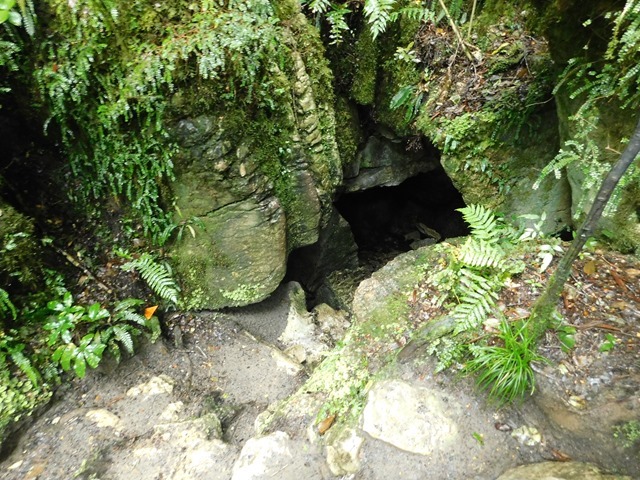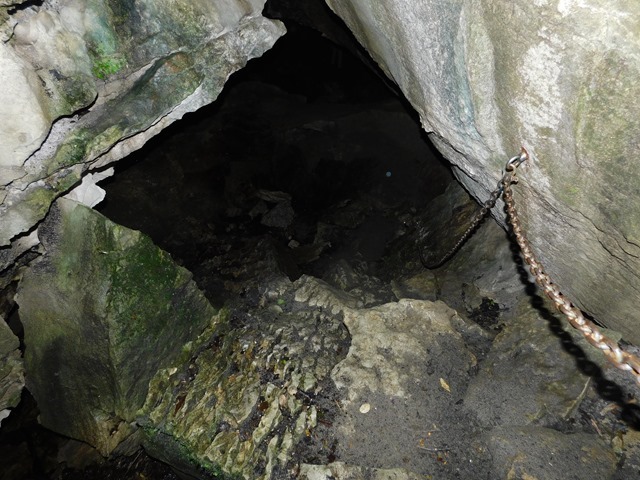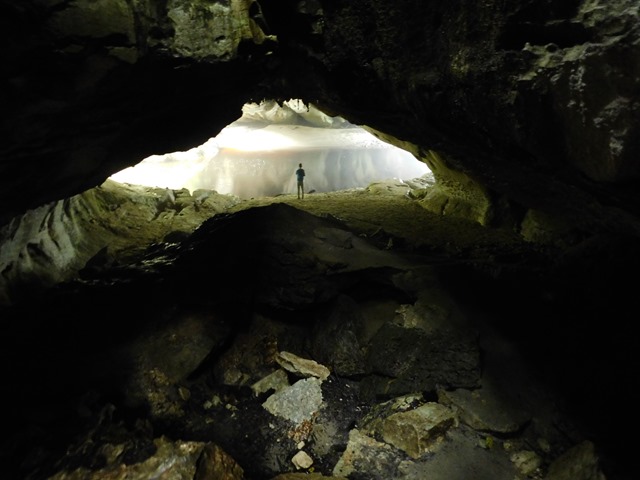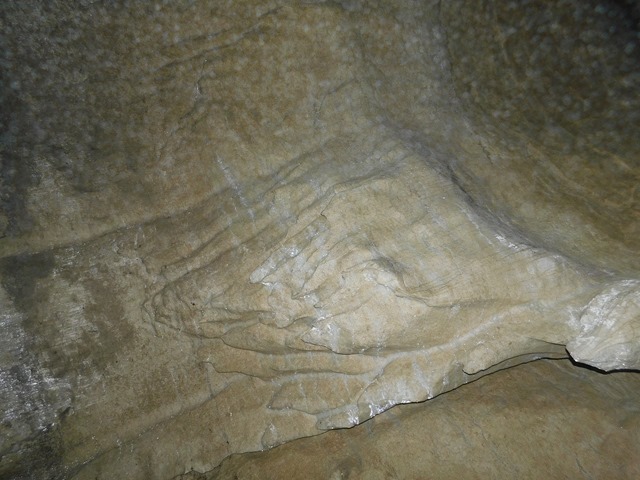luthj
Engineer In Residence
Farther downstream, another arch is accessed via a steep walk into a dark cave.






At the western edge of this park a large cave complex with over 50 entrances exists. Closed to those without a permit, it contains fossils of several unique animals. Bones of giant eagles with 4 meter wingspans have been found there. Their favorite prey, the flightless moa have been found in abundance as well. Extinct for over 200 years, the eagles cut up their prey (often over 100lbs!) and brought them to their nests.
We had to settle for a couple of publicly-accessible caves farther east.
These caves have a rare cave-dwelling spider. With long legs, and a very long slow life, they are right at home in the cold, damp dark.

Laying large egg sacks which hang from the roof.

Their favorite food is the cave weta, which is similar to a cricket.



A much larger cave nearby was inundated by sediment when the glacier nearby melted about 15,000 years ago. Forcing the water to run near the ceiling, unusual formations were carved into the rock. Once the sediment washed out, a 20 meter tall cave with unusual decoration was left.






Centuries of flood and dry cycles have created large mud “pavers” on the floor.

At the western edge of this park a large cave complex with over 50 entrances exists. Closed to those without a permit, it contains fossils of several unique animals. Bones of giant eagles with 4 meter wingspans have been found there. Their favorite prey, the flightless moa have been found in abundance as well. Extinct for over 200 years, the eagles cut up their prey (often over 100lbs!) and brought them to their nests.
We had to settle for a couple of publicly-accessible caves farther east.
These caves have a rare cave-dwelling spider. With long legs, and a very long slow life, they are right at home in the cold, damp dark.
Laying large egg sacks which hang from the roof.
Their favorite food is the cave weta, which is similar to a cricket.
A much larger cave nearby was inundated by sediment when the glacier nearby melted about 15,000 years ago. Forcing the water to run near the ceiling, unusual formations were carved into the rock. Once the sediment washed out, a 20 meter tall cave with unusual decoration was left.
Centuries of flood and dry cycles have created large mud “pavers” on the floor.
